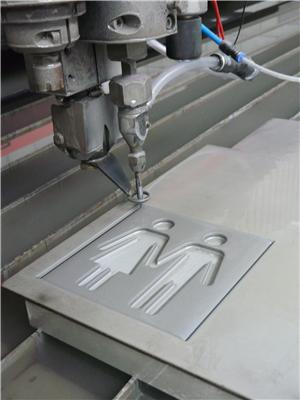CIC marGUNE researchers are working on the development of cost-effective waterjet milling technology. Conventional milling techniques employ wear-prone and expensive cutting tools for aeronautic materials. Researchers from the University of the Basque Country and the Industrial Systems Unit located at Tecnalia are taking part in this project.
The objective is to build a forecast model for a commercial waterjet cutting machine in order to employ these tools for machining and milling parts. Mr Suárez, a fellow Tecnalia researcher, commented that water jet milling and cutting can be differentiated based on the time exposure of the jet upon the material. Thus a prediction model has been developed based on variables to determine the extent to which the jet can be machined.
 Piece milled by waterjet
Piece milled by waterjet
All water jet cutting machines and the machine employed by the researchers of Tecnalia have allowed variations of these parameters. The design of the machines are such that it can operated easily.
Ms Amaia Alberdi, a Tecnalia researcher, designed prediction models for different phases. She explained that first a single slot was modeled by a straight cut in order to view the shape and the imprint left by the jet stream based on the introduced parameters. Then several slots are cut and the water jet performance is tested. Finally, the various paths of the jet were studied to analyze the path that can enable a highly homogeneous depth while machining.
She continued that for making a component, for example, an ashtray, the water jet can be aimed in a zig-zag path or in a spiral path or as parallel straight lines. A change in direction causes the difference between the paths. The erosion caused by the jet will be higher if the time taken to slow down, turn and increase in speed is high.
Ms Alberdi commented that when the model has been built, prediction can be done to know what might happen without any material or human resource investment. Testing on this model can be done with various materials, and this model can be calibrated easily for all materials.
Mr Suárez concluded that the researchers have been convinced that machining technology with water has huge potential for aeronautics applications. A major benefit is that a first roughing can be done cost-effectively when compared to presently used machines.